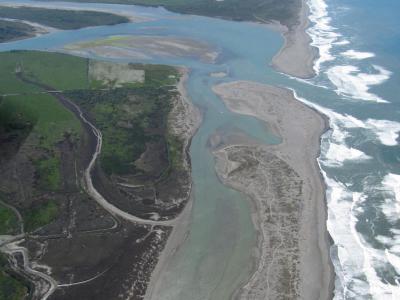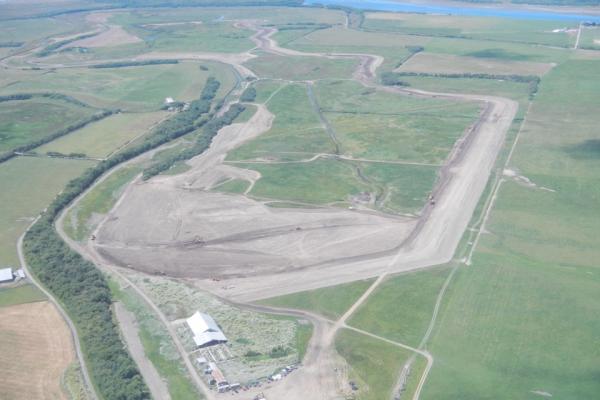Voyage of the Argonauts: Returning Habitat, Economic Prosperity and Navigability to the Eel River Delta
Field Tour Coordinators:
Michael Bowen, State Coastal Conservancy
Jeremy Svehla, GHD, Inc.
Inhabited by humans for thousands of years, the Eel River estuary is one of the most important and sensitive estuaries on the West Coast, with 8,700 acres of tidal flats, both perennial and seasonal wetlands, and about 75 miles of river channels and tidal sloughs. The Eel River Delta provides habitat for many aquatic and terrestrial species, and supports flourishing agricultural communities. Long before the “farm to table” movement, the Eel River Delta, and Ferndale in particular, supplied California markets with some of the world’s finest dairy products. The Eel Delta still produces high quality dairy and beef products, while also hosting one of California’s major salmon and steelhead runs. However, flooding, sea level rise and other issues challenge the viability of some agricultural operations and infrastructure such as roads and waste treatment facilities. Balancing ecosystem restoration with the promotion of high quality agriculture and infrastructure in the coastal zone is challenging, but several key projects illustrate the importance and success of this approach.
Although nearly 60% of the estuary has been lost due to the construction of levees and dikes, 10% of salt marsh habitats remain today. Restoring the estuary is a key component towards recovery of salmon, but also other sensitive and listed species. Ecosystem restoration in the Eel Delta also affords unprecedented opportunities to improve drainage and infrastructure for the agricultural communities around the Delta. The Salt River Ecosystem Restoration Project and the Eel River Estuary Project, two of many projects within the Eel River Delta, seek to restore ecological integrity to reclaimed areas, while also enhancing agricultural productivity and prosperity in the region by providing land management options for landowners that support enhanced business security, stability and ecological integrity. Hydrologically intact and functional channels tend to improve drainage for farmers. It also ensures a complex and diverse estuary with suitable cover of deep channels and sloughs, connected to productive brackish wetlands that will help to increase size and fitness of juvenile salmon prior to entering the ocean, and ultimately improve overall marine survival for adults.
Numerous landowners as well as local, state, and federal agencies, industry representatives, and nonprofit organizations are working together to ensure the Eel River Delta is a working landscape that can support sustainable agriculture and other land management practices while providing healthy fish and wildlife habitats. The Eel Delta provides an historic opportunity to enhance coastal agricultural productivity while ensuring the long-term, recovery of Eel River salmon stocks capable of supporting the regional fishing economy of California’s north coast.
Tour participants will have an unusual opportunity to tour key restoration sites within the Eel River Delta, some of which are located on private land or are otherwise inaccessible for viewing. Likely points along the tour will include the 444-acre Riverside Ranch, the Port Kenyon reach of the Salt River channel, and much of the 1,200-acre Eel River Estuary Preserve, site of a proposed effort to restore historic Centerville Slough and its freshwater tributaries. Focal topics for the tour will include project challenges, lessons learned, biological responses to project features, construction management and administration, and more.



